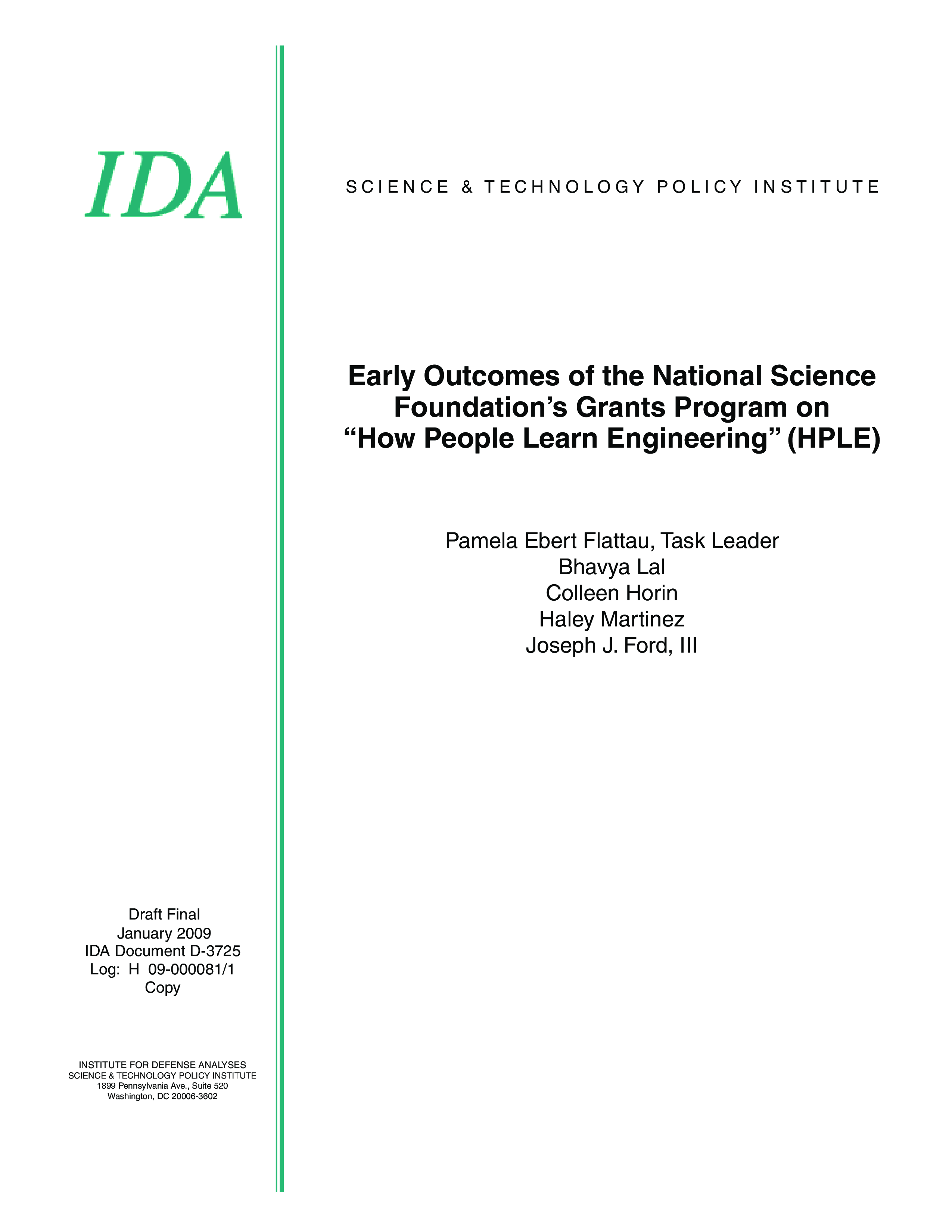In April 2008, the Foundation’s Division of Engineering Education and Centers asked the IDA Science and Policy Institute (STPI) to
evaluate the early outcomes and anticipated impacts of 37 research grants active in fiscal year 2008 in the area of “How People Learn
Engineering.” The objective of the STPI analysis of the HPLE grants program was three-fold: (1) to characterize the portfolio of grants
active in FY 2008, (2) to document selected outputs generated by these grantees as of FY 2008, and (3) to specify the types of indicators
that would be needed to gauge the longer term outcomes and impacts of the HPLE program on engineering education reform. Using administrative files furnished by the agency, STPI developed a Logic Model to characterize the lifecycle of these projects and identified
factors that could be evaluated at different points throughout the lifecycle using the model. Most grantees had developed tool kits, models
to facilitate learning, specific courses/curricula as a result of HLPE funding. Some established websites to make the results of their research available to educators, other researchers, and students. However, STPI’s analysis of the outputs of HPLE grants yielded little evidence for active publication by the scientists in peer-reviewed journals.

